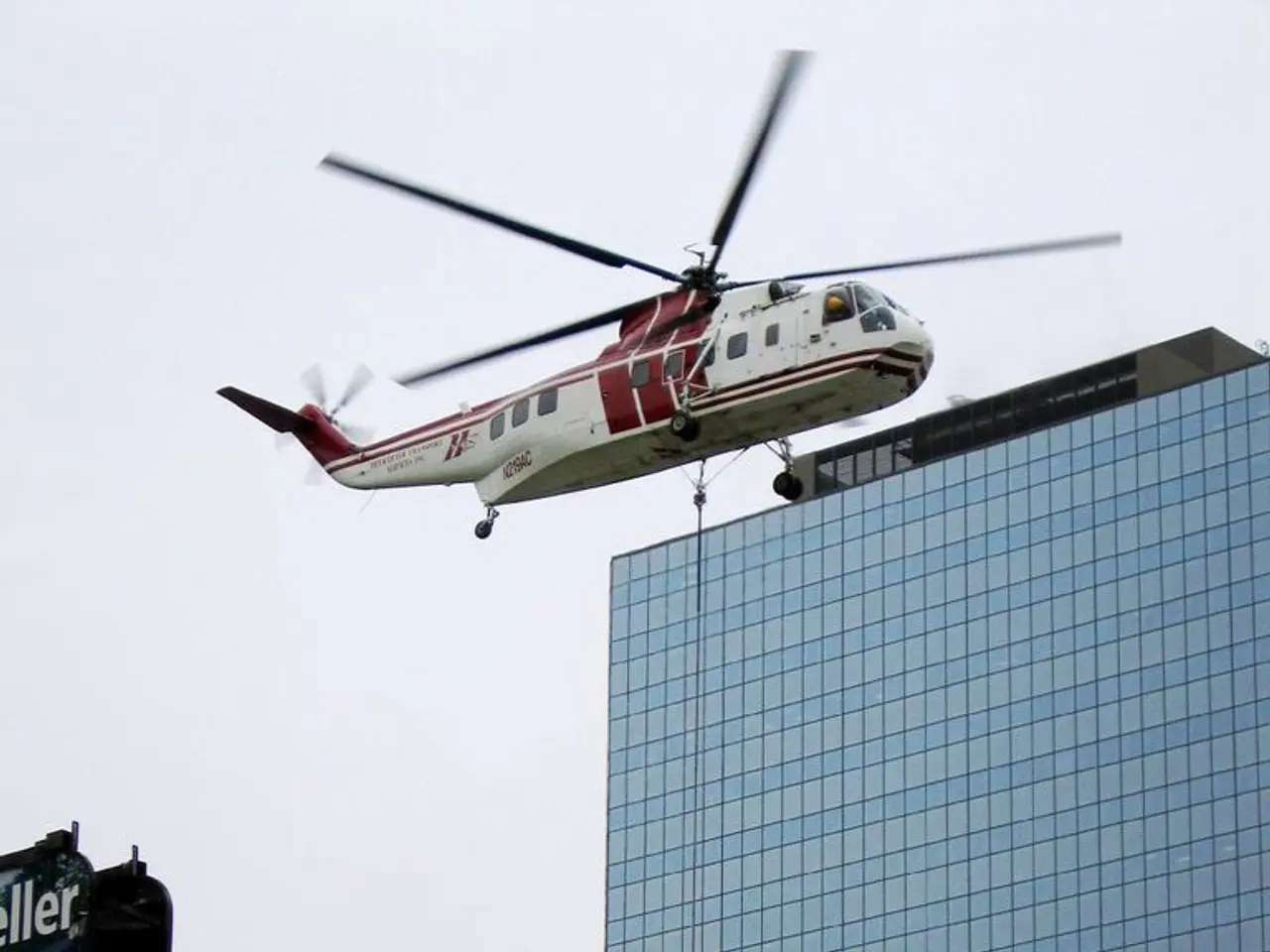NATO taps Airbus for Next-Gen Helicopter Capability research project
Next Generation Rotorcraft Capability (NGRC) Project: A Collaborative Approach to Future Military and Civil Rotorcraft
The NATO Support and Procurement Agency (NSPA) has embarked on a significant milestone with the launch of Concept Study #5 for the Next Generation Rotorcraft Capability (NGRC) project. This multinational partnership, focusing on advancing tiltrotor and rotorcraft technology, involves key aerospace companies such as Airbus Helicopters, RTX's Collins Aerospace, Raytheon, and MBDA.
The NGRC project aims to develop next-generation vertical lift platforms that combine the speed and range of fixed-wing aircraft with the vertical lift capabilities of helicopters. The goal is to replace or supplement existing medium multi-role helicopters with tiltrotor aircraft, offering capabilities such as runway independence, enhanced payload, and operational flexibility on unprepared surfaces.
Bruno Even, CEO of Airbus Helicopters, stated that the goal is to develop a European solution for the needs of NATO armed forces, ensuring industrial sovereignty and maintaining key engineering competencies. The study will be fully interoperable with other NATO means and will focus on high-performance rotorcraft.
Each partner will contribute to the study in their area of expertise: helicopter design, systems integration, connectivity, weapons and effectors, avionics, and sensors. Airbus Helicopters is partnering with RTX's Collins Aerospace, Raytheon businesses, and MBDA for the 13-month study. The strategy to launch three parallel contracts awarded by competition delivers on NSPA's commitment to maximize industry expertise, opportunity, and engagement in the program.
The NGRC project is one of the initiatives overseen by the NSPA, which is NATO's lead organization for multinational acquisition, support, and sustainment in all domains. The agency, headquartered in the Grand Duchy of Luxembourg, with main operational centers in France, Hungary, and Italy, employs over 1,500 staff and oversees more than 500 contractors worldwide.
The concepts will be modular and multi-mission, and will have a high degree of connectivity and resilient communication systems. The broad range of Airbus helicopters includes dual platforms like the H225M and H145M, as well as specialized military helicopters such as the Tiger and the NH90.
This collaborative effort aligns with broader NATO and U.S. defense goals, particularly replacing nearly 1,000 medium multi-role helicopters with tiltrotors, reflecting a transatlantic collaboration in rotorcraft innovation. The program emphasizes developing tiltrotor demonstrators with scalable architectures, non-tilting engine installations, modular flight control systems, and advanced drivetrain designs to achieve Technology Readiness Level (TRL) 6 by flight testing.
In addition to the NGRC project, related programs include Clean Sky 2's NextGen Civil Tiltrotor demonstrator and DARPA's SPRINT program. Advanced digital modeling, virtual and augmented reality tools are being used to accelerate design validation, reduce prototyping time, and streamline development across partners, including the U.S. Army's FLRAA program, which shares conceptual ground with NGRC.
The NGRC project also focuses on reducing CO2 emissions, NOx, noise footprint, and overall operating costs while enhancing payload, speed, range, and agility compared to current rotorcraft. The study aims to analyze two integrated concepts of next-generation military rotorcraft, marking a significant step forward in the development of a new class of rotorcraft that will address future mobility and sustainability needs in military and civil sectors.
The NGRC project, with Airbus Helicopters, RTX's Collins Aerospace, Raytheon, and MBDA as key participants, is also collaborating with other initiatives such as Clean Sky 2's NextGen Civil Tiltrotor demonstrator and DARPA's SPRINT program, to foster a transatlantic collaboration in rotorcraft innovation. The ultimate goal is to develop a European tiltrotor solution for both military and civil sectors, while staying interoperable with NATO means, and achieving Technology Readiness Level (TRL) 6 by flight testing.
Building on Airbus's wide range of helicopters including the H225M, H145M, Tiger, and NH90, the NGRC project aims to reduce CO2 emissions, NOx, noise footprint, and overall operating costs, while enhancing payload, speed, range, and agility, to address future mobility and sustainability needs in the aerospace and finance sectors.








